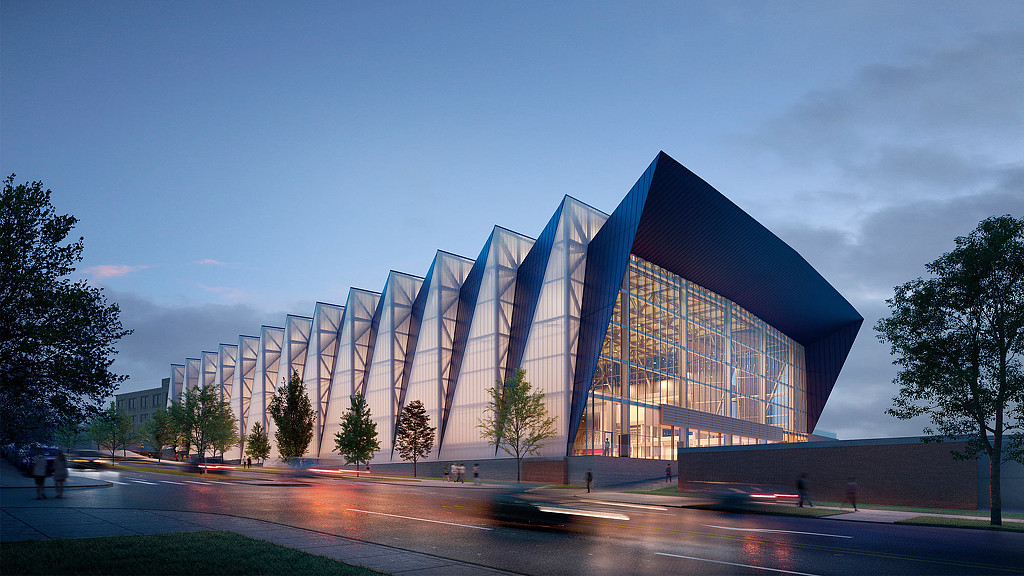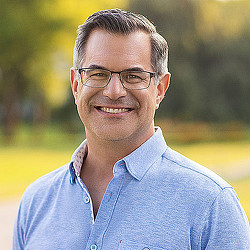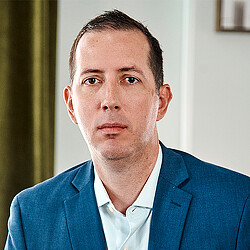Writing the Next Chapter of Sports and Entertainment in Kansas City
May 13, 2024 | Q&A with Jordan Goldstein and Greg Brown
In 2009, Gensler launched its sports practice in Los Angeles with the L.A. Live project, a six-block, 4-million-square-foot mixed-use entertainment district in the city’s downtown core. Since then, we have become the second largest sports and entertainment practice in the world with studios in multiple offices in L.A., Austin, Washington, D.C., and London.
Since that first project, the practice has steadily moved away from single-use venues that fill up on game day but sit empty the rest of the week and toward the type of multiuse districts epitomized by L.A. Live. We now help clients bring venues into the urban core and surround them with hospitality, retail, residential, and other types of spaces that create vibrant destinations every day of the week.
Today, our investment in this rapidly growing business continues with the opening of a new location in Kansas City.
We sat down with Gensler Co-CEO Jordan Goldstein and Kansas City Studio Director Greg Brown to talk about the exciting evolution of sports venue design, the trend toward sports anchored entertainment districts, Gensler’s unique role in the industry, and, of course, why we chose Kansas City as the newest locale for this burgeoning practice.
Gensler is expanding into Kansas City and investing further into an already thriving sports and entertainment practice. Why Kansas City?
Jordan Goldstein: Over the last 15 years, we’ve been able to grow our Sports and Entertainment practice into the second largest in the world.
It’s been tremendous growth — in large part because our clients recognize that people are craving in-person experiences more than ever. Sports-anchored entertainment districts are seeing tremendous growth and playing vital roles in their cities.
Kansas City is a hub for architecture and design talent with a passion for the human experience. Expanding Gensler into the Kansas City market and growing our practice with the talent here makes for an unmatched opportunity to partner them with our experts in other areas such as hospitality, mixed use, and digital experience design. Together, we can create truly impactful and human-centric sports and entertainment districts.
Greg Brown: The origin story of sports architecture as a dedicated practice was authored in Kansas City. In the 60s and 70s, stadium design followed a “cookie-cutter” model in which venues were created to host both baseball and football, even though neither was done particularly well.
Kansas City leaders were the first to move away from that model when they commissioned the design and construction of two individual purpose-built stadiums for the Royals and the Chiefs in the early 70s. That bold ambition and clear vision was the catalyst for sports-specific venue design around the country.
Today, 50 years later, sports architecture is at another inflection point, and I’m excited about our ability to influence what will come next right here in Kansas City where the story began. The future will be full of site specific, resilient, and accessible venues designed to respond to their specific time and place.
Can you define that inflection point? How is the sports and entertainment industry changing and what’s driving that growth?
Jordan: Sports venues and sports-anchored developments are now becoming an integral part of cities, and they’re bringing life and vibrancy back into the urban core. People are craving experiences in everyday life.
If we can create these experience multipliers in city blocks and change the way people interact with the built environment in a positive way, it injects vibrancy and helps to form a sense of belonging in the neighborhood.
We’re focused on designing for the whole human experience. When we engage in these live-work-play communities, we find human connection and purpose.
Greg: Increasingly, sports fans, community members, and development teams are seeking to extend both the game-day experience and the event calendar. This means that venue development is just the starting point. Now, developers and teams expect experience multipliers around the venue.
This is why we’re seeing a rise in multipurpose entertainment districts anchored by sports venues. The gameday experience, the joy of gathering with unity of purpose, and shared passion can extend far beyond the time on the competition clock.
When designed well, a great sports anchored development can serve as a contemporary town square — a place to celebrate, a place to gather, and a place to come back to.
Are there good examples of what this shift looks like?
Greg: Sports anchored developments and entertainment districts are shifting to become more accessible, more flexible, and more connected. Both transit and financial access to community assets are increasingly emerging as design drivers for the planning and development for sports venue and entertainment district development.
The Hub on Causeway at TD Garden in Boston is a great example of an ultra-accessible arena-adjacent development. It adds value to the gameday experience, and it creates a community focal point with retail, office, and hotel space. It’s also integrated into North Station, one of the city’s main commuter transit hubs.
The Deer District in Milwaukee is another example of where sports districts are headed. This mixed-use district is built around the Bucks NBA arena and is a flexible canvas for multipurpose event programming that brings people together in exciting new ways. Local residents call it the city’s “living room.”
Jordan: Another trend we’re embracing is the desire to connect venues and entertainment districts to their unique local surroundings. Perhaps no project responds to its context better than the Moody Center in Austin.
One part on-campus basketball home, one part live-music venue, and one part big-time entertainment and events host, the building and surrounding outdoor space has the ability to shape shift according to its need. It also sets the table for future development opportunities for the University of Texas and the City of Austin.
It seems like stadium design requires expertise in more than just a sports practice — entertainment districts have hotels, for example, along with restaurants, retail, and other venues. It seems like you also have to have an understanding of city planning.
Jordan: Exactly. These events at stadiums bring cities back to life. Event goers are increasingly visiting these entertainment and social districts and staying beyond the single event.
There’s a whole ecosystem attracting event-goers — from hotels to restaurants and bars, retail and cultural attractions. Instead of creating a single stadium for one purpose, we’re bringing in our expertise in residential, retail, hospitality and master planning to really create these vibrant social districts.
The global nature of our firm allows us to pair our local Kansas City Sports team with other experts anywhere in the world to really design for the full human experience.
What are some opportunities that you see at Gensler to design in different ways for the sports environment?
Greg: One exciting thing about working at Gensler is the “right people, right team, right project” philosophy.
We’re uniquely positioned to have a significant positive impact on the future sports venue and entertainment district design by bringing the right people to the right project at the right time to address each project’s specific needs.
Jordan: We’re starting to see an important shift in women’s sports too. With the success of women’s professional soccer in the U.S. and Europe and an increase in viewership with Women’s College Basketball and the WNBA, we need to consider that the professional sports venues need to change to accommodate more than male athletes.
The “cookie cutter” sports facilities weren’t designed with both male and female athletes in mind. We have a huge opportunity to design dedicated facilities for the growing women’s programs and give them dedicated services that fit their specific needs.
Generally speaking, Gensler has the creativity and experience to help our clients solve whatever challenges they face. Our diversity of experience, diversity of creative thought, and diversity of people — now bolstered by this new Kansas City team — allows us to deliver the most innovative and successful designs in the world.
For media inquiries, email .


